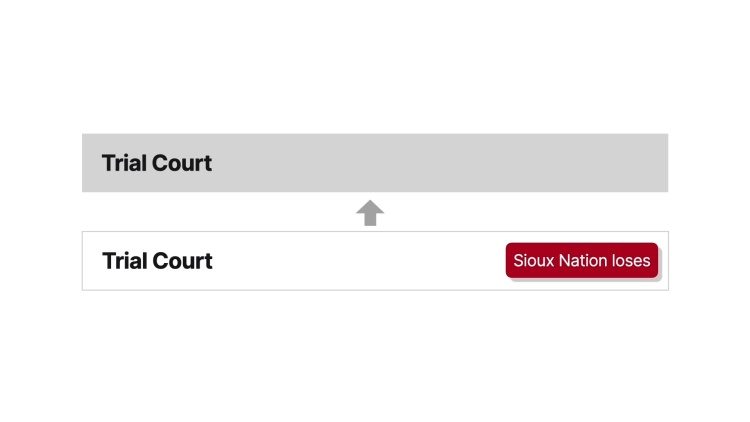United States v. Sioux Nation
United States Supreme Court
448 U.S. 371 (1980)
- Written by Jamie Milne, JD
Facts
In 1868, the Sioux Nation (plaintiff) signed the Fort Laramie Treaty with the US government (defendant). The treaty established the Great Sioux Reservation and promised that no unauthorized persons would be permitted to enter or settle there. In exchange, the Sioux gave up their right to occupy lands outside the reservation. In the 1870s, gold was discovered in the Black Hills on the reservation, attracting miners and settlers. Originally, the US army prevented them from trespassing on the reservation. However, the government later decided it was better to recover the Black Hills from the Sioux. Initial negotiations broke down. At the same time, Congress was increasingly frustrated by the Sioux’s ongoing reliance on subsistence food rations that the government was no longer obligated to provide. Eventually, the United States convinced the Sioux leaders to sign an 1876 treaty giving up the Black Hills in exchange for continued subsistence rations for as long as they were necessary for the Sioux’s survival. Although the Sioux leaders signed the treaty, it was not signed by three-fourths of adult males as required by the Fort Laramie Treaty. Many of the Sioux considered the 1876 treaty and the 1877 act enacting it to be illegitimate. The Sioux Nation spent many years attempting to sue the United States for just compensation for the land. Eventually, the Indian Claims Commission held that the 1877 act was a taking of Sioux land without just compensation in violation of the Fifth Amendment. In 1979, the court of claims affirmed, holding that the Sioux were entitled to $17.1 million plus interest dating from 1877. The United States Supreme Court granted certiorari.
Rule of Law
Issue
Holding and Reasoning (Blackmun, J.)
Dissent (Rehnquist, J.)
What to do next…
Here's why 899,000 law students have relied on our case briefs:
- Written by law professors and practitioners, not other law students. 47,000 briefs, keyed to 994 casebooks. Top-notch customer support.
- The right amount of information, includes the facts, issues, rule of law, holding and reasoning, and any concurrences and dissents.
- Access in your classes, works on your mobile and tablet. Massive library of related video lessons and high quality multiple-choice questions.
- Easy to use, uniform format for every case brief. Written in plain English, not in legalese. Our briefs summarize and simplify; they don’t just repeat the court’s language.





